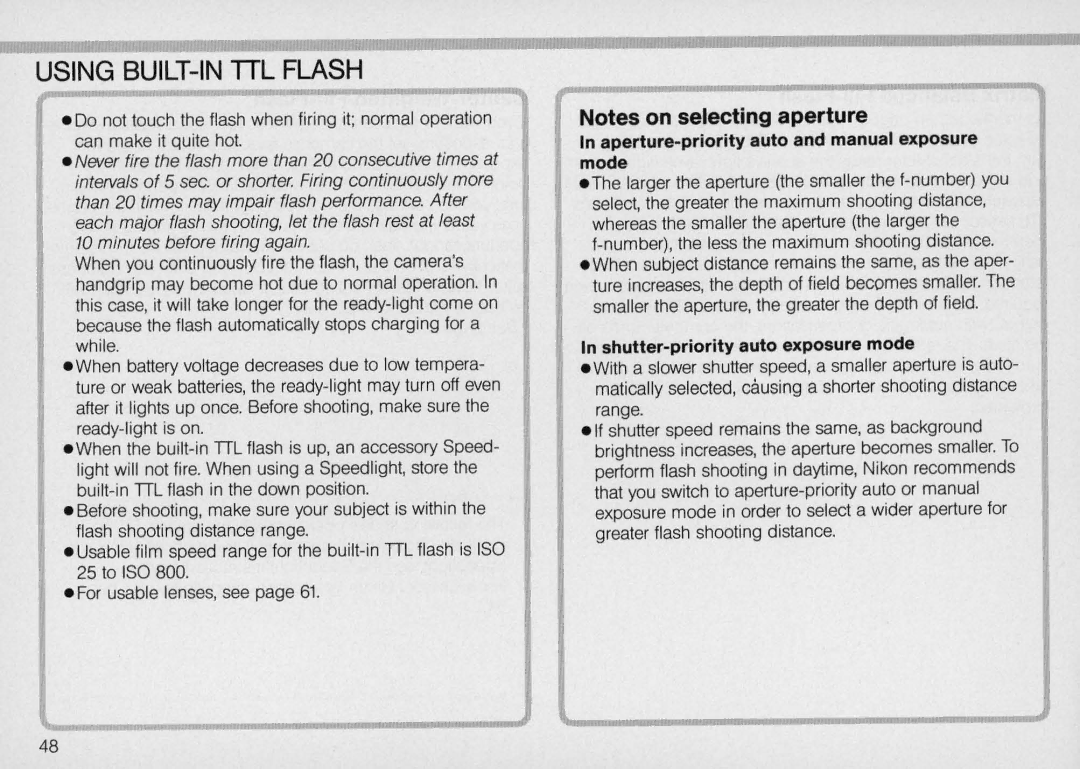
USING BUILT-IN TTL FLASH
-Do not touch the flash when firing it; normal operation can make it quite hot.
e Never fire the flash more than 20 consecutive times at intervals of 5 sec. or shorter. Firing continuously more than 20 times may impair flash performance. After each major flash shooting, let the flash rest at least 10 minutes before firing again.
When you continuously fire the flash, the camera's handgrip may become hot due to normal operation. In this case, it will take longer for the
- When battery voltage decreases due to low tempera- ture or weak batteries, the
e When the
e Before shooting, make sure your subject is within the flash shooting distance range.
- Usable film speed range for the
e For usable lenses, see page 61.
Notes on selecting aperture
In aperture-priority auto and manual exposure mode
e The larger the aperture (the smaller the
- When subject distance remains the same, as the aper- ture increases, the depth of field becomes smaller. The smaller the aperture, the greater the depth of field.
In shutter-priority auto exposure mode
e With a slower shutter speed, a smaller aperture is auto- matically selected, causing a shorter shooting distance range.
e lf shutter speed remains the same, as background brightness increases, the aperture becomes smaller. To perform flash shooting in daytime, Nikon recommends that you switch io
48
